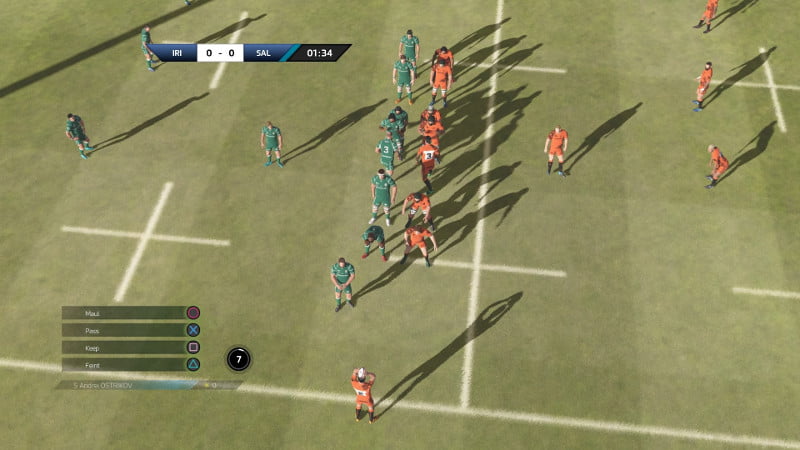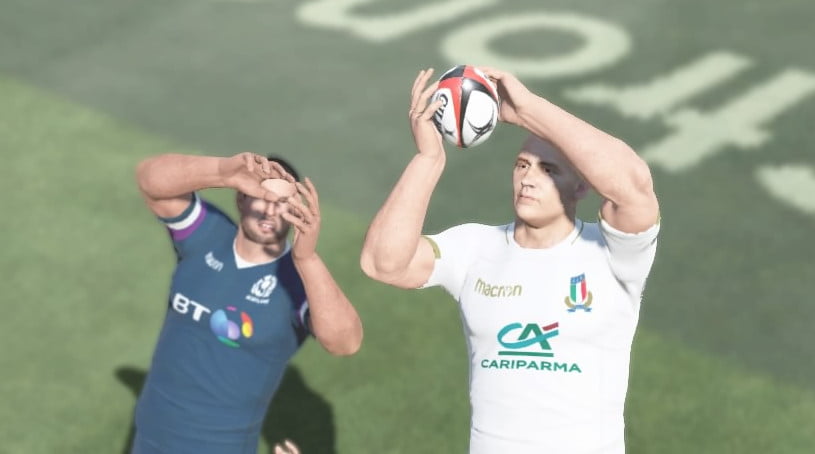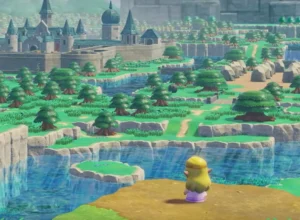For years, it’s looked like rugby union games are dead in the water. Can Rugby 18 deliver a solid challenge?
Rugby union is a complex thing.
It’s machinations are belied by its outward presentation – one of violence, of burly men, slamming against one another like trains shunting in a yard – but it’s far more technical than a game like football.
Just take the tackle. It looks crude and brutish, but there are so many variables – velocity, mass, height, head position, moving limbs, to hold up or go to ground, to try and rip the ball or bundle it with the player to slow down the opposing ruck – and if you get any one of them wrong, the consequences can be severe. There’s a reason why high tackles and the perilous spear tackle have been stamped down on so heavily by World Rugby: broken necks, backs, and permanent, debilitating damage.
Rugby 18 is the latest in a sporadic licence (we last saw an official rugby union game in 2015, and before then, 2011) and the first from developer EKO Software, probably best-known for How to Survive. EKO have shown themselves to be a developer who at least understands that rugby is a complex sport.
We know this because, when we attended a review event to get our hands on the game (before, thankfully, also being sent away with a code to take our time over), we were set down at a console with three chairs: one each for Dan and I, and the third for one of EKO’s developers, so he could explain what the hell was going on.
The individual developer – whose name I have forgotten, my apologies to him – proceeded to explain the intricacies of controlling Rugby 18 to us. He would run through a couple of phases, then pause the game to explain either what he just did, or what he was going to do next. Thankfully, the game does also include a stop/start tutorial in place of this developer conversation, or you’d all be as confused as we were.
“It is not at all like FIFA,” is a phrase that came up a lot. And my apologies in advance: there’s going to be a lot of explanation of the controls and how the game plays, because Rugby 18 is as complex a beast as the sport it’s based on.


When defending, for example, you don’t chase after the player manually, because it’s too fiddly. You allow the AI to move your team in a defensive line, then when the timing is right, you hit B/Circle to tackle. You can see which one of your players is most likely to make the tackle by a glowing circle under their feet.
If the player’s too far away, you can use the right analogue stick to make a diving tackle. Time it right, and you might cause them to spill the ball or gain an advantage at the ruck; time it wrong, and you might miss completely, or give away a penalty for a dangerous tackle.
At the ruck, press B/Circle to add an additional player to the breakdown. A gauge shows which team has the upper hand, driving over the ball. If you push the right stick up as your player joins, you gain an advantage in the shove; if you time it wrong, you’ll go backwards. If you’re over the ball, you can call up your scrum half to move the ball out; call him up too early and the opposition puts a counter-shove on, though, and you’ll turn over the ball.
Once the scrum half has the ball in hand, you can pass, kick, or run. Passing is achieved using the front shoulder buttons; a short tap for a short pass, or a longer hold for a big throw. Passes aren’t guided, and if you throw the wrong distance – or to nobody in particular – it will allow you to mess up.
Kicking uses the face buttons, with different buttons producing different results. Pressing X/Square while the scrum half is still attached to the back of the ruck will allow you to ‘box kick’ over your head to clear the lines. In open play you can punt, grubber, or ‘Garryowen’ as the situation demands.
The available options are contextual – you can’t perform actions the situation won’t allow – and mercifully, as there’s a lot to remember, the game displays the available buttons and their functions on the screen as a prompt.
You’ll absolutely need those prompts at the breakdown, because it gets even more complicated again.
Let’s take the line-out as an example. In efforts to capture the relative uncertainty of rugby’s thrown-in restarts – from first selecting how many players you want to include, to where you want to lift, to dummies and feints, to what you actually want to do with the ball when you throw it – there’s a lot to take in, and a lot of button presses. There’s something of a mix between dumb luck and rock, paper, scissors, particularly if you’re defending.
It’s here where you first feel like things aren’t as straightforward as they could be, and perhaps some more concessions could be made to FIFA-like simplicity. Scrums are similar.


First, you’ll perform some quick-time events, for the crouch, bind, set portions of putting the scrum together. Then when the ball is put in, a sort of twin-stick mini game pops up on the screen, where the defending team tries to move a pivot point elusively, and the attacking team tries to chase that pivot point on a circular gauge to advance.
It’s a similar system to the one that the game uses for driving mauls, and while I can’t honestly think of a better way to do it, set pieces in Rugby 18 are fiddly, distracting disconnects from open play.
For a game that is intentionally technical, there are also some omissions that rugby aficionados will notice. You can’t hook the ball early at a scrum when you have the upper hand, for example, nor can you bring players back out of a ruck or maul if you realise you’ve lost the shove and would prefer to bolster your defensive line.
It’s a similar story with the rules. Offsides, for example, are implemented well (with a visual indicator on the screen for who can play the ball and who can’t) but advantages seem to run for a fixed time, regardless of whether the team who has the advantage actually has the ball. I’ve also not seen any evidence of players calling a ‘mark’, when catching the ball in their 22-metre zone, or the difference between a kick going out of play on the full or with a bounce.
That’s the story across Rugby 18, really: it’s a decent effort, but you can tell that developing a licensed sports game with a budget that must be orders of magnitude smaller than FIFA or Madden leads to some little gaps and rough edges.
The presentation, for example, is actually strong, in a FIFA-from-a-couple-of-years-ago sense. You can recognise all the players and the animation – again, another massive point of complexity with so many bodies flying around in contact with one another – is solid.
The stadia and environments feel atmospheric enough but, other than the wind’s impact on kicking, there are no weather effects. The grass doesn’t wear away, nor do the players’ kits get muddy, and some alternate weather (like driving rain, with all the slippery play that comes with it) would make for some exciting changes to matches.


There is representation from all the major rugby-playing nations, too, and 2000 players in the English Premiership, French Top 14 Pro D2, and multi-national Pro14. The league mode is fun, but is mostly just a procession of matches, while the career mode gives the game a management focus.
As is de rigueur at the moment, Rugby 18 also contains a fictional dream team mode, where you can buy players using in-game points and compete against your friends with your fantasy line-up. Thankfully there are no real-currency microtransactions or loot boxes here; just points that can be earned through playing the game, completing challenges, and in a lovely little touch, answering pop-quiz questions about rugby during loading screens.
Rugby 18 is a mostly-solid video game, but due to its complexity and a little bit of roughness, it’s definitely one best-saved for avid rugby fans. Lord knows, they’ve been starved for a decent digital representation of their sport, probably since Jonah Lomu Rugby way back in 1997.
There are however signs that EKO Software has a good handle on the sport, and given a couple more years with the licence – and perhaps a bigger budget from publisher Bigben, if Rugby 18 is deemed a success – they could turn these foundations into a great rugby video game series.
Game: Rugby 18
Platform: PS4, Xbox One, PC
Developer: EKO Software
Publisher: Bigben Interactive
Release Date: igital PS4, Xbox One, PC: October 27th, 2017 / Retail PS4, Xbox One: November 3rd, 2017






